Your Guide to Fossil Hunting Equipment!
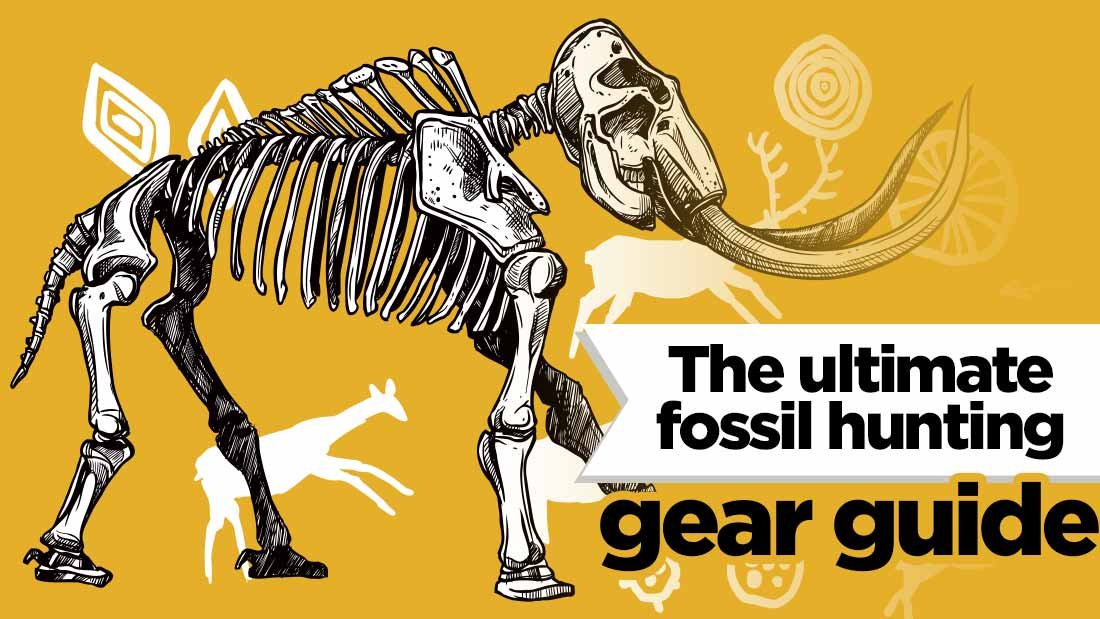
Contents
Fossil hunting can take different forms.
It may involve anything from taking a tranquil stroll on the beach in a t-shirt and pair of shorts to an extreme physical challenge in the middle of nowhere….
Typically, different locations will require different clothing gear depending on the weather at the time of the year, which in the UK can be pretty terrible.
But aside from dressing appropriately, you also need to have the right set of tools to help you with the collection of fossils. This may require a bit of planning, which will be dependent on the area you are going for the expedition.
So, if you are preparing to go hunting for fossils with a group of friends, you want to use the following guide to make sure that you have all the necessary equipment for a successful fossil hunting adventure.
Backpack

A backpack is one of the most important tools to have in the field. The right kind of a backpack will not only protect the fossils but also make it easy for you to carry those heavy finds. The bag will also be used to hold a variety of accessories that need to be readily accessed.
Obviously here at ArcticDry we create a Waterproof Backpack that is actually perfect for such a popular hobby like Fossil Hunting. (not so subtle plug! #sorrynotsorry!) Check out our backpack below:

Some general use bags may not be able to cope with all this weight and snap, causing you to damage your fragile finds. It is thus important that you look for a backpack with a strong holder construction, strong straps, back support, ample accessory pockets, as well as an optional rain cover.
Geological Hammer
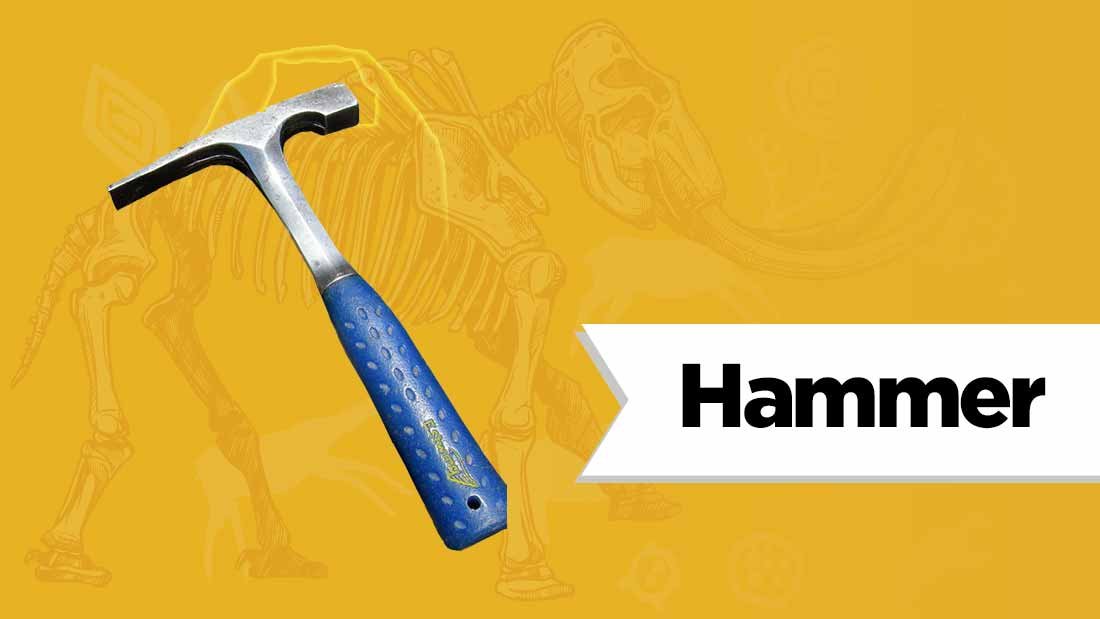
Choosing the right geological hammer is crucial and will normally depend on the field circumstances and the individual.
You need to remember that hammers come in all shapes and sizes, and these will be used for breaking rocks as you look for fossils underneath them.
The right hammer should have a wide head and a well-constructed handle. You’ll want to try different weights before choosing one that feels comfortable in your hands.
For people with less physical strength such as children, it is recommended that you get a head weight of no more than 500g. Too much weight ends up inhibiting the use of the tool and can cause repetitive strain injury.
Chisel

A chisel is necessary to remove fossils from the surrounding matrix, as well as splitting possible fossil-bearing nodules. Often, a large chisel is used to complete the bulk of the work, whereas a smaller chisel is used for more precise and finer work.
We suggest a chisel made from cold steel because the metal is designed for hard materials. Any softer metal may not be able to last a day.
Hammering Gloves
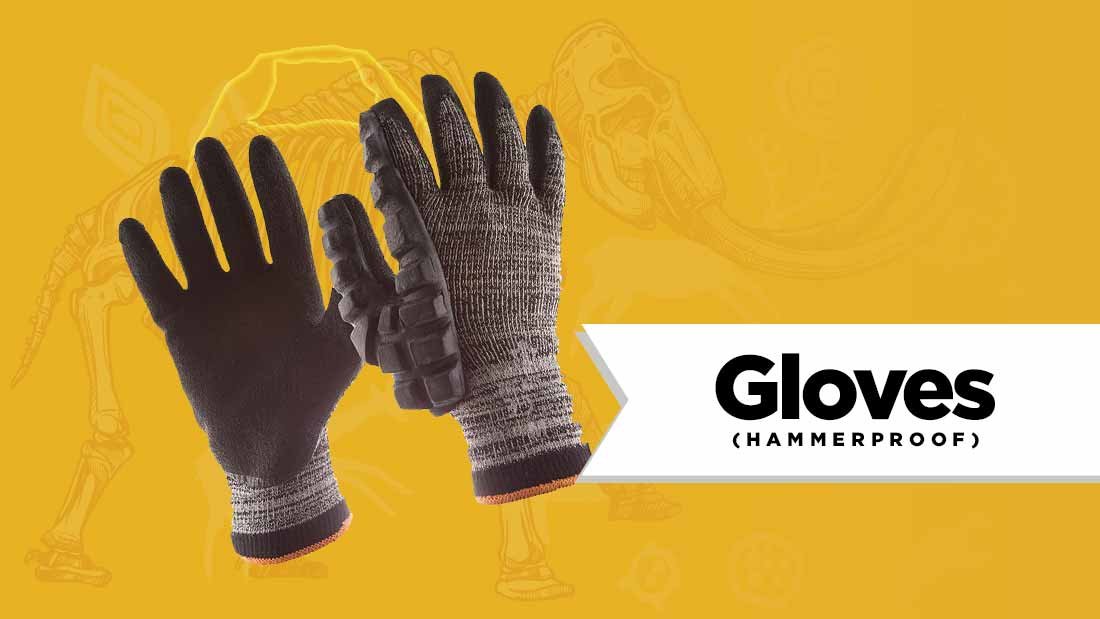
Digging up fossils from the ground and underneath rocks is a difficult task that may take hours to complete. Using a hammer to pound the rocks without a protective glove can end up causing blisters and soreness on your palms.
A tough glove can be the perfect addition to your fossil hunting equipment kit, and in a way its really an essential addition too.
Steel Point
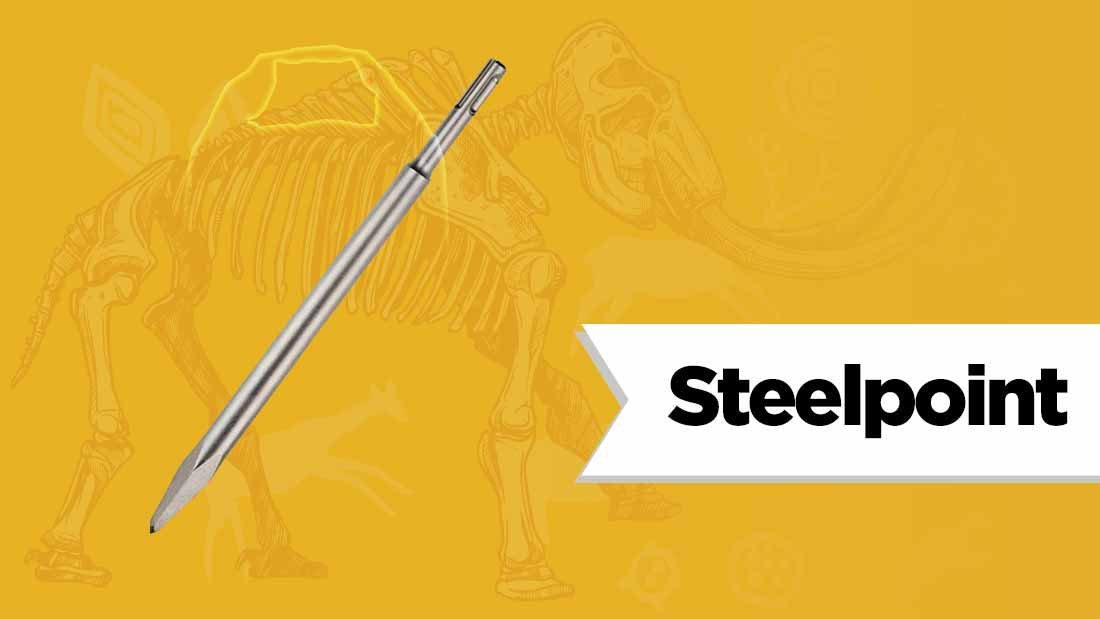
Some cases don’t necessarily require a hammer or a chisel to get rid of the matrix surrounding a potential fossil. All that may be required is careful precision work with the help of a steel point.
This is especially relevant when it comes to a crumbly matrix where chiseling may end up shattering a fragile fossil. A steel point may also be used alongside liquid glue to position and consolidate any loose parts of a fossil.
Brush

Pretty much an obvious one right?
Sometimes more commonly used among archaeologists, its also a useful piece of fossil hunting equipment. A brush is another essential piece that helps to clean the dust out of fossils that have been partially covered by loose materials. It can be used in the field, as well as at home to clean the surface of the fossil with a view of determining the most ideal method of recovery.
You can also use it in the field when making repairs by cleaning the adjoining surfaces before gluing them together.
Superglue
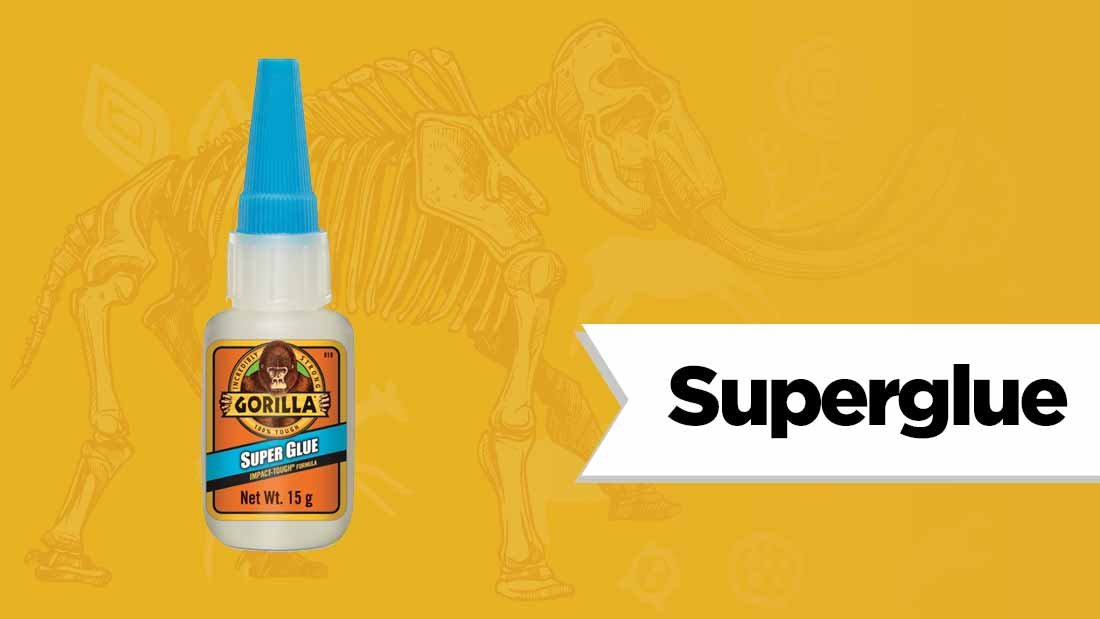
An essential piece of fossil hunting equipment! Applying glue to a potential fossil in the field is usually a measure taken as last resort given that such action is irreversible. The best place to use glue would be in a controlled place such as at home or in a laboratory.
If you come across a broken specimen that can be transported without damaging it further, there is no need to use glue.
In cases where the specimen may otherwise undergo irreversible damage while being transported, a fast-setting glue provides a more practical solution.
You can find fast-setting glue as either a liquid or gel. Liquid glue tends to penetrate cracks and get underneath loose surface material more quickly. This proves to be very useful when dealing with a specimen that hasn’t yet fallen apart.
On the other hand, gels are applied in a controlled way; they are particularly more useful on a specimen that has disintegrated and needs to be joined together before extraction.
Always keep in mind that superglue can pose a potential risk if handled without attention. Remember to follow the guidelines on the packaging and wear your safety glasses before using them.
Safety glasses
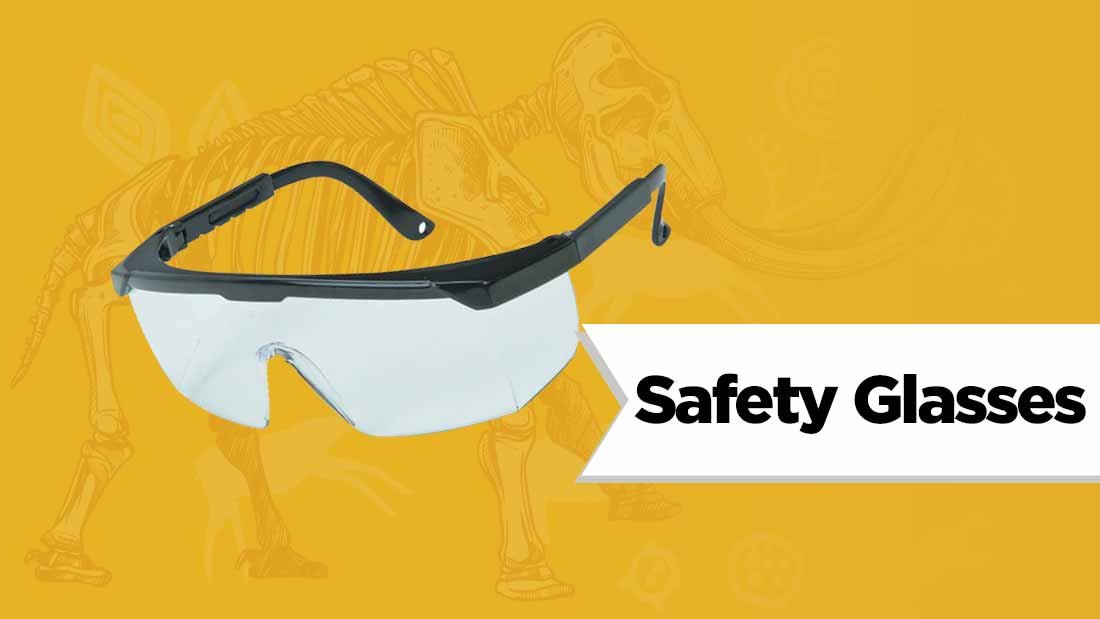
While hammering through rocks, there’s always a risk of rock splinters and debris getting into your eyes if not protected. This can lead to serious injury, and that’s why safety glasses are required to deflect any flying splinters away from your eyes.
The eye protection gear should also be worn by those watching since the flying rock pieces can cover a significant distance.
Foam Wrap

It is always important to protect your hard-to-reach and fragile fossils from possible damage once you have extracted them. Foam plays a huge role in cushioning them from hits and bruises during transportation and storage.
The material is lightweight and can be utilised easily and quickly whenever needed. Besides, foam sheets can be repeatedly used, unlike newspapers.
Padded Compartment Box

Some fossils are too small and fragile to be wrapped around in foam and transported home. As an alternative, compartment boxes with cotton are normally used for these fragile specimens. These reduce the risk of damage by cushioning the pieces in case of turbulence on a bad road.
However, specimens that have fragile surface details may be prone to damage when removing strands of cotton that have been caught in crevices.
This means enough care should be taken not to cause further damage.
You can also line the interior with some of the foam wrap from above ^ or another material of a similar composition.
Magnifying Glass
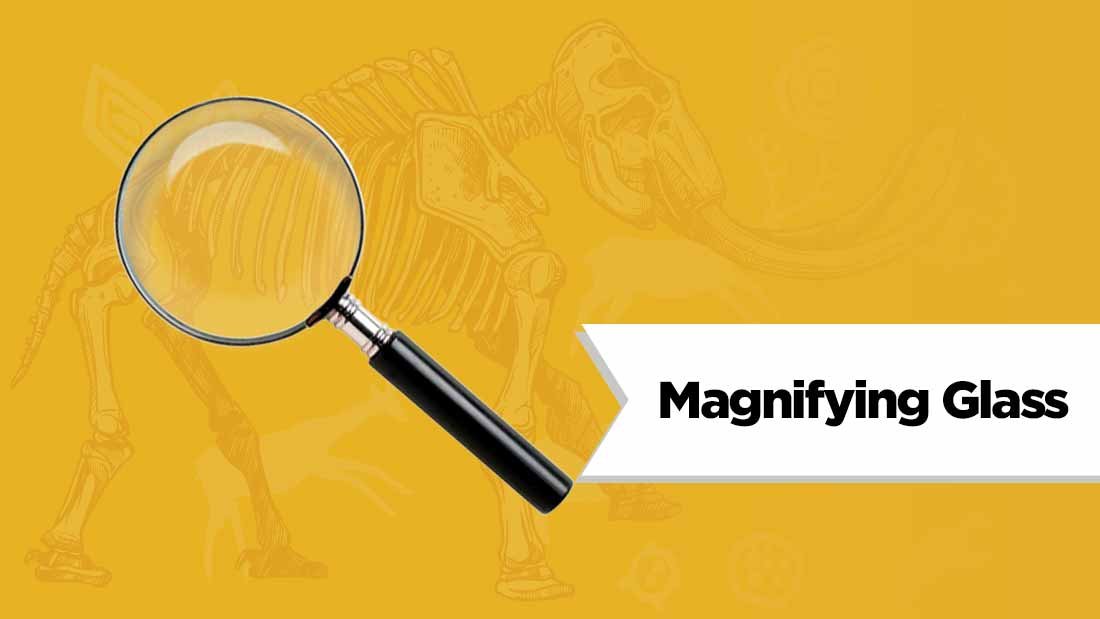
A magnifying glass allows a fossil hunter to view the finer details of a fossil that they encounter in the field. It can be amazing just how well-preserved the most intricate structures on a potential find can be. With the help of a magnifying glass, all this becomes apparent to you when you are assessing a fossil.
Fossil Hunting Clothing
Apart from having the right equipment, you also need to have the appropriate clothing gear before going to hunt for fossils. These will not only protect you from possible danger but also ensure that you stay comfortable throughout the experience:
Hard Hat
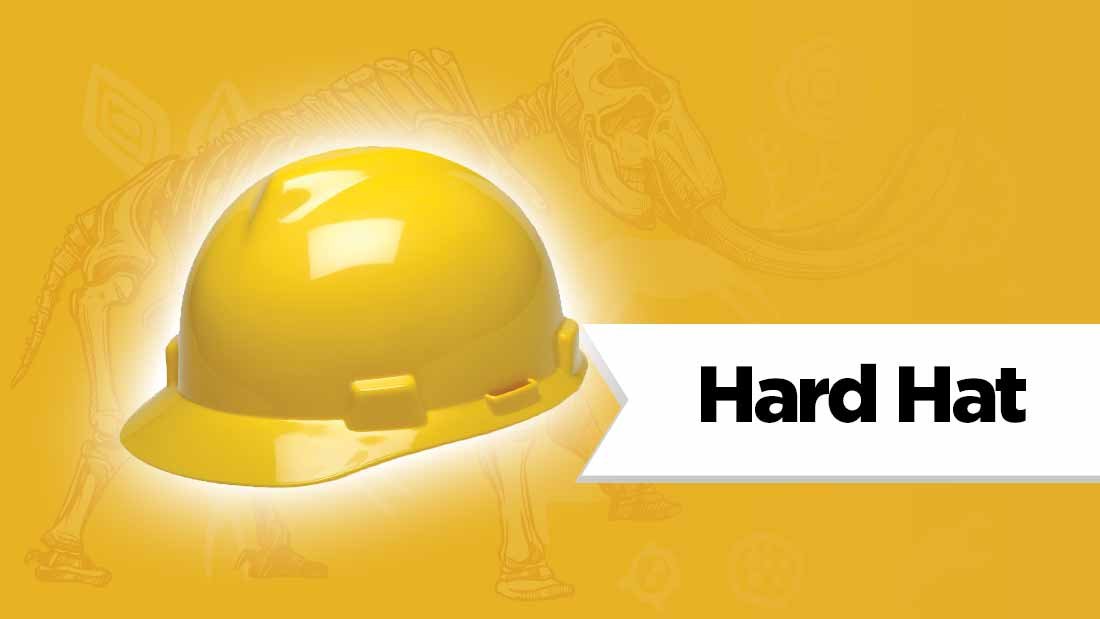
Now this depends on where you are fossil hunting!
A hard hat is an essential safety gear that will shield you from the scorching sun and any flying rock debris that may fall in the field during extraction. This is a common phenomenon when you venture in rocky areas, cliff faces, and within quarries. A standard builder’s hat is the minimum that you should wear to protect yourself from possible injury.
Visibility Jacket

Wearing a visibility jacket or any other brightly colored piece of clothing is encouraged to enhance your chances of being found expeditiously in case of an accident.
It is also a legal requirement that you have them on in places like a quarry to improve the chances of being spotted by vehicle operators. A suitable option for jackets is those that are originally intended for cyclists.
Walking Boots
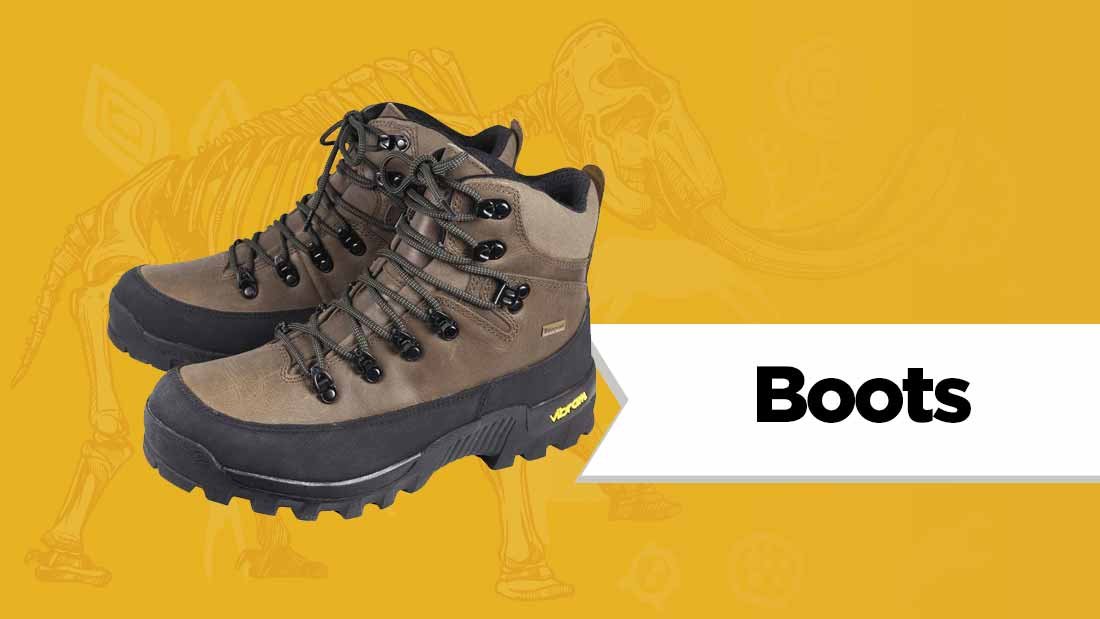
Walking boots are another essential part of your fossil hunting clothing gear. A good pair will protect you from possible ankle sprains as a result of slips while trading on wet surfaces.
They also come in handy in different rough terrains that are synonymous with fossil hunting. Whether you are hiking in rocky, gravel, wet, or muddy conditions, the right walking boots will make the whole experience easier for you. Truly an essential piece of fossil hunting equipment that you wont mind investing in. In this case quality boots will last you a while and are worth spending money on.
Other Equipment that you May find Useful
Soft Paper
If you don’t have cotton wool, soft paper can be a viable alternative when you want to carry delicate and fragile specimens. Toilet rolls and kitchen paper can work but newspapers may be slightly hard for the more fragile finds. If possible, you can purchase large rolls of paper from cleaning stores to use in the field after extracting the fossils.
Digital Camera

There are cases where you may encounter a fossil that you want to carry home but time is not on your side or it is too huge to carry at that particular moment.
It is also possible that you may fear to damage a precious fossil you have just discovered because of how delicate it appears, so taking a quick snap may be the only way of documenting the intact fossil in case the extraction goes terribly wrong.
Digital cameras become very handy in such cases and allow you to go back and conduct further digging with the hope of discovering more valuable fossils. However, make sure that the camera you carry is too delicate so that there is an easy risk of getting damaged by falling rocks, sand, rain, etc.
It is also common for fossil hunters to take photos for the purpose of future reference when they want to go back to the site of a major find.
Maps, Guides, Books
If you are going to be fossil hunting in uncharted territory, then you’ll need the help of maps and guides to find the location. These will save you the trouble of locating a pre-identified spot once you get to the field.
This is especially true when you are exploring areas like a desert where it is easy to get lost.
Mobile Phone
You can’t underestimate the importance of a mobile phone in an era where they have become a way of life. A phone could end being your lifeline in the unfortunate event that you get into trouble when you are out hunting for fossils alone.
It will also be a life savior when you get cut off from the group or fall and get injured.
First Aid Kit
A first aid kit will also be useful when you sustain minor injuries like cuts, bruises, and sprained ankles. These are all common when hunting for fossils in terrains that are characterised by sharp rock edges and beach coral.
Conclusion
Discovering fossils is an important activity that has existed for millions of years. It is always interesting when you come across proof of life that had been hidden for eons and sharing it with the world. However, to make sure that you have a successful fossil hunting expedition, the right tools should always be considered.
The above guide should help you pack all the needed fossil hunting equipment when your friends invite you for such an adventure.








